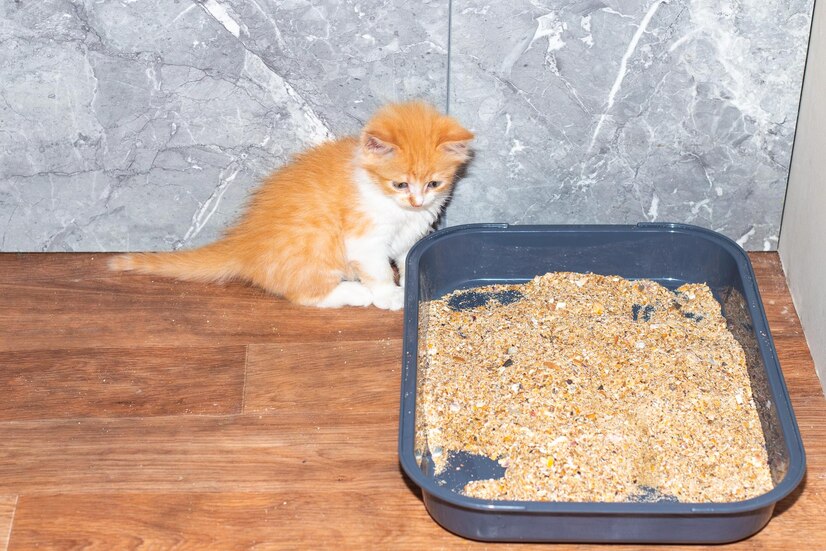Are you tired of finding messes around the house? A well-trained cat can make litter box issues a thing of the past! Litter box training is natural for most cats, but they may need your help to get started. With a few straightforward techniques, you can make this a smooth process.
Picture a home where your cat knows exactly where to go, every time. Training helps you maintain a cleaner, fresher space and keeps both you and your cat happy. Ready to start? Let’s walk through some simple steps to make litter box training easy and stress-free for you and your cat!
Why Litter Box Training Matters
Proper litter training is essential for a harmonious home environment. When a cat is well-trained, the benefits go beyond just cleanliness; it also promotes a stress-free setting for both you and your pet. Cats prefer having a reliable, designated area for their needs, and with the right approach, they’ll quickly recognize the litter box as that space.
Read following article for solution on peeing issues.
Why Is My Cat Peeing Outside the Litter Box?
Choosing the Right Litter Box
The litter box type can make a big difference in successful training.
- Size and Depth: Pick a box that’s big enough for your cat to turn around in comfortably. For kittens, a low-sided box is best for easy access. Older cats or cats with mobility issues may also need a box with a low entrance.
- Covered vs. Open: Some cats prefer open boxes for better airflow, while others like the privacy of a covered box. Observing your cat’s behavior can help you decide which they prefer.
- Multiple Boxes: If you have multiple cats, aim for at least one box per cat, plus an extra. Cats can be territorial and may avoid a box if it’s frequently used by another cat.
Read also
Why Is My Cat Pooping Outside the Litter Box?
Selecting the Right Litter
Cats can be quite particular about the type of litter used. Here are a few points to consider:
- Texture and Scent: Many cats prefer unscented, clumping litter because it feels softer and more natural. While scented options are available, they might deter some cats if the scent is too strong.
- Experimenting: If your cat resists one type of litter, try a different texture or brand. Kittens often need extra patience, as they’re learning from scratch and may be sensitive to certain types of litter.
Read Also
How Many Litter Boxes Per Cat?
Setting Up the Litter Box in the Perfect Spot
Location is critical. Here’s how to find the best place for the box:
- Privacy Matters: Place the litter box in a quiet, low-traffic area where your cat feels safe. Laundry rooms, spare bathrooms, or quiet corners can work well.
- Accessibility: Ensure the box is easy to reach, especially for young kittens or older cats. Avoid spots that are too hidden or hard to reach, as cats may avoid inconvenient locations.
- Avoid Loud Areas: Steer clear of noisy appliances or areas with frequent disturbances, as this can make cats feel stressed or frightened while using the box.
Read Also
How Often Should You Change Cat Litter?
Introducing Your Cat to the Litter Box
Once the box is ready, introducing your cat is the next step:
- Show and Gently Guide: Start by placing your cat in the box and letting them explore it on their own. For kittens, gently placing them in the box after meals or naps helps build routine.
- Positive Reinforcement: When your cat uses the box successfully, reward them with gentle praise, petting, or a small treat. Positive reinforcement helps them associate the litter box with positive feelings.
- Patience with Kittens: Kittens may take a little longer to catch on, so be patient and consistent. If they have accidents, gently redirect them without scolding.
Read Also
Keeping the Litter Box Clean
Cleanliness is essential for cats, as they can be picky about using a dirty box.
- Scoop Daily: Removing waste daily keeps the box fresh and encourages your cat to keep using it. Cats may avoid a box if it isn’t clean.
- Change Litter Regularly: Completely replace the litter every one to two weeks, depending on the type. This keeps odors to a minimum and makes the box more inviting.
- Deep Clean the Box: Periodically, wash the litter box with mild soap and water. Avoid using harsh chemicals or strong-smelling cleaners, as these can deter cats.
Troubleshooting Common Litter Box Problems
If your cat isn’t using the litter box, there could be several reasons:
- Medical Issues: If a previously trained cat starts having accidents, a vet checkup is wise. Urinary tract infections or other health problems can lead to litter box avoidance.
- Territorial Issues: In multi-cat households, litter box avoidance can stem from territorial issues. Adding more boxes in separate areas can help.
- Stress Factors: Changes at home, like new pets, visitors, or renovations, can stress a cat and affect litter box habits. Create a calming environment and give your cat time to adjust.
Extra Tips for Successful Litter Box Training
- Avoid Punishment: Cats respond poorly to punishment, which can increase anxiety and worsen litter box avoidance. Instead, reward good behavior and redirect calmly if they miss the box.
- Routine and Consistency: Stick to a routine when cleaning the box or moving it to another location. Cats appreciate predictability and are more likely to respond positively when they know what to expect.
- Observe and Adjust: Every cat is unique. Watch how your cat interacts with the box and make adjustments if they seem hesitant or uncomfortable.
Why Litter Box Training is Important for Bonding
Training your cat to use the litter box isn’t just about maintaining a clean home—it’s also a way to bond. Positive reinforcement, gentle guidance, and understanding your cat’s needs can strengthen the connection between you and your pet. Read Can Cats Eat Onions? A Deadly Threat
FAQ Section How To Train a kitten to Use Litter Box
How to Litter Train a Kitten
To litter train a kitten, start by introducing the litter box around 3 to 4 weeks old. Place it in a quiet, easily accessible location and use unscented, clumping litter if possible. After meals and naps, gently place the kitten in the box to encourage use. Keep the box clean by scooping it daily, and reward your kitten with gentle praise when they use it. Avoid punishment if they have accidents, as positive reinforcement helps them learn faster.
For more detailed guidance, you can check PetMD’s guide.
What to Do if Your Kitten Won’t Use the Litter Box
If your kitten won’t use the litter box, first check that the box is in a quiet, accessible spot and cleaned regularly. Try using a different litter type if they seem uncomfortable. Place them in the box after meals or naps to encourage use, and reward them when they go in it. If they continue avoiding it, consult a vet to rule out health issues.
Read About



